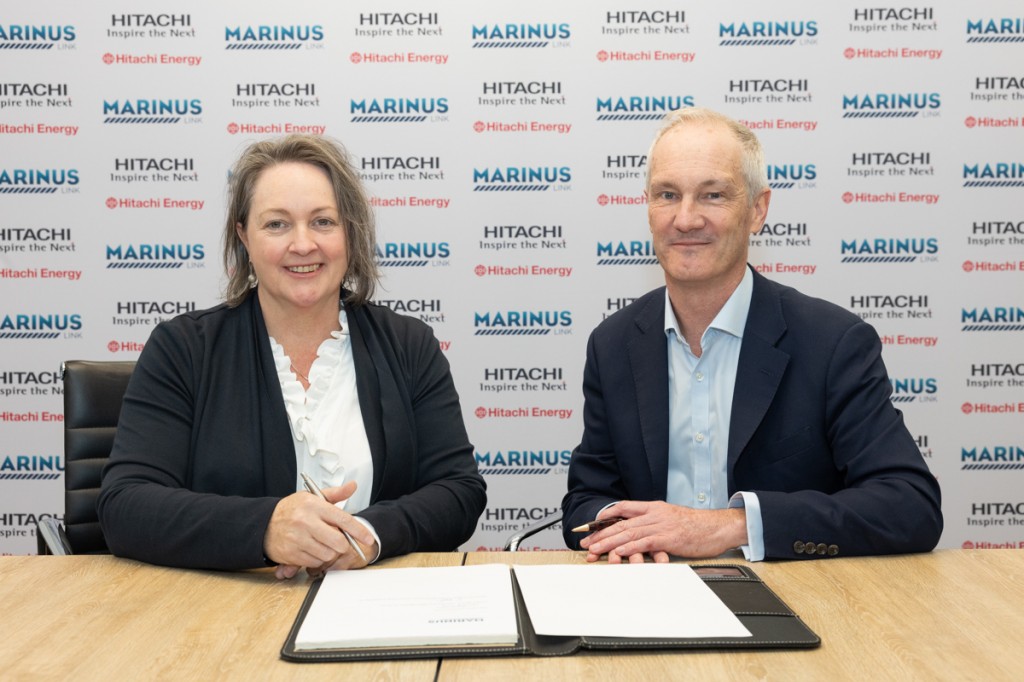
Hitachi Energy is a global technology leader that is advancing a sustainable energy future for all. (Image from the company Facebook)
An Australia-first using advanced HVDC technology to stabilize an increasingly renewable grid — A transmission project of national significance to play a key role in Australia’s energy transition to power 1.5 million homes — Hitachi Energy’s two-way power transmission technology will unlock Tasmania’s world-class wind and hydro storage resources to deliver affordable and reliable clean energy for Australians
Melbourne, Australia / Zurich, Switzerland, May 23, 2024 (Korea Bizwire) – Hitachi Energy has been selected by Marinus Link Pty Ltd (MLPL) to supply a high-voltage direct current (HVDC) project of national significance, which will augment the connection between mainland Australia and Tasmania’s grid.
The approximately 345-kilometer cable route HVDC system will enable the flow of renewable power in both directions between the Victorian and Tasmanian states.
For the first time in Australia, Marinus Link will use advanced converter technology at both ends of the link to stabilize and integrate more and more renewables into the power grid.
The connection will enable the Tasmanian state to import excess supply of solar and wind produced in Victoria, while reserving its hydro and storing the extra energy. Clean hydropower can then feed the mainland grid when it is needed most, acting as a large battery for the nation. Moreover, it strengthens the security of supply in the Australian power grid in which electricity is increasingly generated from sustainable energy.
Hitachi Energy will supply its HVDC Light® voltage source converter (VSC) stations in the first stage of the project, which will convert alternating current (AC) to direct current (DC) for efficient, long-distance transmission and DC to AC, where the electricity is returned to the grid.
“As Australia is rapidly transforming its grid to support the integration of more clean energy sources, we are proud of our HVDC technology that will help transmit large amounts of electricity with higher stability and lower electrical losses,” said Niklas Persson, Managing Director at Hitachi Energy’s Grid Integration business. “Interconnectors like Marinus Link give customers access to affordable, on-demand renewable energy supply and increase storage capabilities.”
Upon completion of both project stages, Marinus Link will have a total capacity of 1,500 megawatts (MW), equal to the power needed for 1.5 million Australian homes. In line with Australia’s Net Zero ambitions, as coal-fueled generation is retired, this link will result in saving up to 140 million tons of CO2 equivalent emissions by 2050, equal to taking approximately 1 million cars off the road.1
Australia has committed to achieving Net Zero emissions by 2050 and reducing greenhouse gas emissions by 43 percent below 2005 levels by 2030. The lowest-cost pathway for secure and reliable electricity is from renewable energy, connected by efficient transmission systems, supported by storage and pumped hydro.
Marinus Link is a project of national significance that will play a fundamental role in the two states’ energy ecosystem in which power infrastructure requires a major overhaul to satisfy the growing electrical demands and guarantee a constant and reliable power flow through Australia’s transition to renewable energy
“Today, we have taken another firm step towards project execution. With our essential HVDC systems secured, Marinus Link is poised for delivery by the end of the decade. Marinus Link is a cornerstone project of the Australian Government’s Rewiring the Nation Plan and is classified as urgent in the Australian Energy Market Operator’s national energy plan,” said Caroline Wykamp, CEO of Marinus Link Pty Ltd. “The Australian, Tasmanian and Victorian governments recently entered an historic agreement for joint ownership of Marinus Link, securing it as a critical transmission project for Australia.”
Hitachi Energy pioneered commercial HVDC technology 70 years ago and has delivered more than half of the world’s HVDC projects. Today, the company has the largest installed base of HVDC in the world.
1 https://www.marinuslink.com.au/
Attachments
- Hitachi Energy’s HVDC technology to power Australia’s Marinus Link
- Hitachi Energy’s HVDC technology to power Australia’s Marinus Link

Media Relations
Hitachi Energy
media.relations@hitachienergy.com
Justin White
Marinus Link Pty Ltd
justin.white@marinuslink.com.au
Source: Hitachi Energy Ltd. via GLOBE NEWSWIRE









The Marinus Link project, leveraging Hitachi Energy’s HVDC technology, represents a pivotal advancement for Australia’s renewable energy infrastructure. By enabling bidirectional power flow between Victoria and Tasmania, the project will optimize the use of renewable energy, enhancing grid stability and reliability. Tasmania’s hydro reserves can act as a massive battery, storing excess wind and solar energy from Victoria and supplying it back when needed. This initiative aligns with Australia’s ambitious Net Zero goals, promising significant CO2 reductions by replacing coal-fired power with sustainable energy sources. The Marinus Link underscores the crucial role of advanced technology and strategic interconnectors in the nation’s clean energy transition.